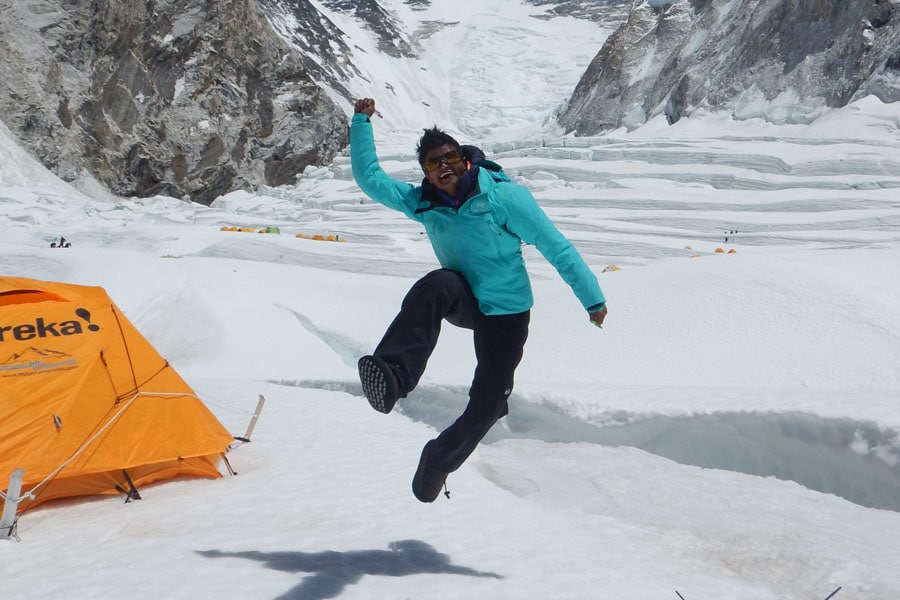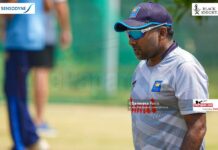Standing at more than 8,848 metres above sea level, Mount Everest is at the edge of the Earth’s atmosphere. It is the closest a human being can get to space without getting in a machine. It is not a place where we are meant to inhabit.
Above 8000m we enter the death zone, where we take in 30% of the oxygen levels of what we would at sea level. A human being used to breathing air at sea level, that is all of us mere mortals, could only survive up there for a few minutes before being knocked unconscious. The body stops digesting food in order to focus on preserving organ function and it starts to consume fat first and then muscle. More than 200 climbers have lost their lives in the death zone and they remain on the mountain, functioning as grisly landmarks – shocking reminders of the extreme risks climbers face in summiting the world’s highest mountain.
Yet standing at only 155cm and 45kgs, the diminutive Jayanthi Kuru-Utumpala, against these odds, on May 21, 2016, became the first Sri Lankan to summit the world’s highest mountain. She follows in the footsteps first forged by Sir Edmund Hilary and Tenzing Norgay when they made the first official ascent of Everest in 1953. The mountaineer’s accomplishment cannot be understated as we will see that the obstacles surmounted on the way to the summit were many, even before she reached Everest base camp, and once she was on the mountain it was a two month super-human effort that saw her to the top of the world.
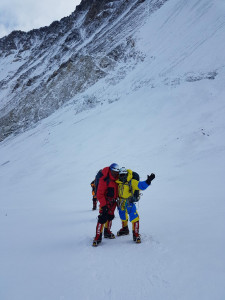
She has always taken a different path. She says, when she was in her early twenties and working as a journalist, “once a group of friends and I went into the hills to climb a mountain and of course there was a path but we made our own path up to the peak. We got lost and now we always take a compass and extra water, but I do like to take the path less travelled.”
The path to the mountains proper continued in 2002 when Jayanthi enrolled in a Himalayan Mountaineering Institute course after seeing a photo while in India studying for her Bachelor of Arts degree in English Literature. “I was at my lecturer’s house when I saw a framed photo of her husband in the mountains. I asked about it and decided I wanted to attend the course too”, said Jayanthi. “I learnt a lot about mountaineering, rock climbing, ice climbing, altitude sickness and how to treat it and it was the advanced course I took the following year that continued my mountaineering skills”.
A friend introduced Jayanthi to her mountaineering partner Johann Peries, who was organizing an expedition to climb Island Peak, another Himalayan mountain. “I was just so happy to meet another Sri Lankan who was taking time off work, and paying to climb mountains, and so I went climbing with Johann”, says Jayanthi, “and it was on the expedition to Island Peak that I asked if Johann would ever consider attempting Everest, because we could see the Everest on that trip…..and after a couple of days he came back and said, OK let’s do it”.
Over the next five years, and a couple of mountains, the trust between the two grew but there was still the Rs 10 million per person metaphorical mountain to conquer to fund the expedition. A team of friends volunteered to help with crowd-funding, setting up a Facebook page and formal fundraising events. Corporate sponsors came on-board and in the final weeks before departure their financial target was reached.
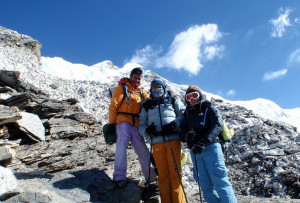
There is no way to put the acclimatization rotations into perspective for the ordinary person living at sea level but let us try. At base camp you are already operating at 50% oxygen levels and at the summit it drops down to 30% oxygen levels. This is like being on the edge of a non-stop asthma attack, always searching for more air. Every ascent begins with a five to eight hour climb through the Khumbu Icefall. At 5500m the Khumbu Icefall is located at the head of the Khumbu Glacier and is considered one of the most dangerous stages of the South Col route up to the Everest summit. It is estimated that the glacier advances a metre a day causing large crevasses to open and seracs (large towers of ice) to collapse without warning. The path through the perilous icefall is taken before the sun comes up during the coldest hours of the night so climbers head off at around 3am to minimize the risks. Large blocks of ice varying in size from that of a car to a large house tumble down periodically and many climbers have paid the ultimate price, like in 2014 when 16 Nepalese climbers were killed by an avalanche in the Khumbu Icefall.
The real challenge in the acclimatization training is making the climbs within the time limit, “… on my climb from camp 2 to camp 3 I was too slow by three hours, after nine hours climbing the Lhotse Wall I was only three quarters of the way up …. I was sent back to camp 2 and I had one more attempt to cut my time down or I wasn’t allowed to attempt the summit. I spent the day in my tent crying and wondering ‘how am I going to do this’ until I remembered the saying ‘if you think you can do it, you can do it’, so I said I can do this and I did” says a triumphant Jayanthi.
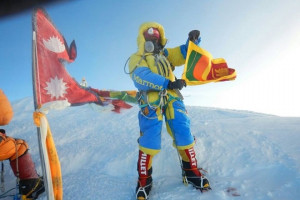
Jayanthi was a little slower up the mountain than the rest of her expedition so she set off an hour earlier than her fellow Sri Lankan mountaineer Johan for the ascent to the summit. Johan’s departure time of 9pm put him in the middle of a climbing traffic jam that delayed his climb. He used up his oxygen and energy while waiting and so missed the opportunity to summit during this expedition.
The weather dictates when the summit window is open for an attempt and teams who time it right will be at camp 4 for a day preparing for the final ascent of Mount Everest. While you are reading this in the climatic comfort of 28 degrees centigrade, a gentle breeze rustling the leaves of the tree outside, the challenging weather on Mount Everest is difficult to understand. For a summit attempt to be given the green light all of the stars must align. On a good day the extreme weather conditions at the top of Mount Everest see the temperature drop to minus 28C and the wind speed to 20 kilometres per hour. On bad days, similar to the day of the 1996 Everest disaster when eight people died in a blizzard, the winds exceed 200 kmph and the temperature drops to less than minus 50C. Although the use of forecasting is standard, the climate changes can come without warning so judging the weather is a life and death decision.
At 5am on the morning of May 21, 2016 Jayanthi Kuru-Utumpala reached the summit of Mount Everest and so became the first Sri Lankan to reach the highest point on earth. She recalls “… on the way up you feel a spiritual connection with the mountain, I’m not religious but I am spiritual and I think this helped … ”.
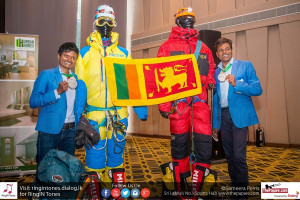
South Africa, Poland, Croatia and now Sri Lanka are the only countries that have had a woman summit first and this dovetails nicely with Jayanthi’s views and work on gender equality. Her worldview is different from the majority of our society in that she actively works for gender equality. Now we all say we believe in gender equality but we participate in a society that is rooted in stereotyping genders at such a young age that we cannot help but be shaped into believing that blue ribbons are for boys and pink ribbons are for girls. Jayanthi has recently become an Ambassador for the Ministry of Women and Children’s Affairs and hopes that her accomplishments, and continued service, can break down the barriers that stand in the way of women and girls reaching their desired potential.
If our indefatigable hero can overcome all the obstacles placed in front of her, and her goal to summit Mount Everest, then it is inevitable that she will ascend the slippery slopes of gender equality. Jayanthi’s monumental success paves the way for all of us to strive to reach our potential for, in the immortal words of Sir Edmond Hilary, “It is not the mountain we conquer, but ourselves”


